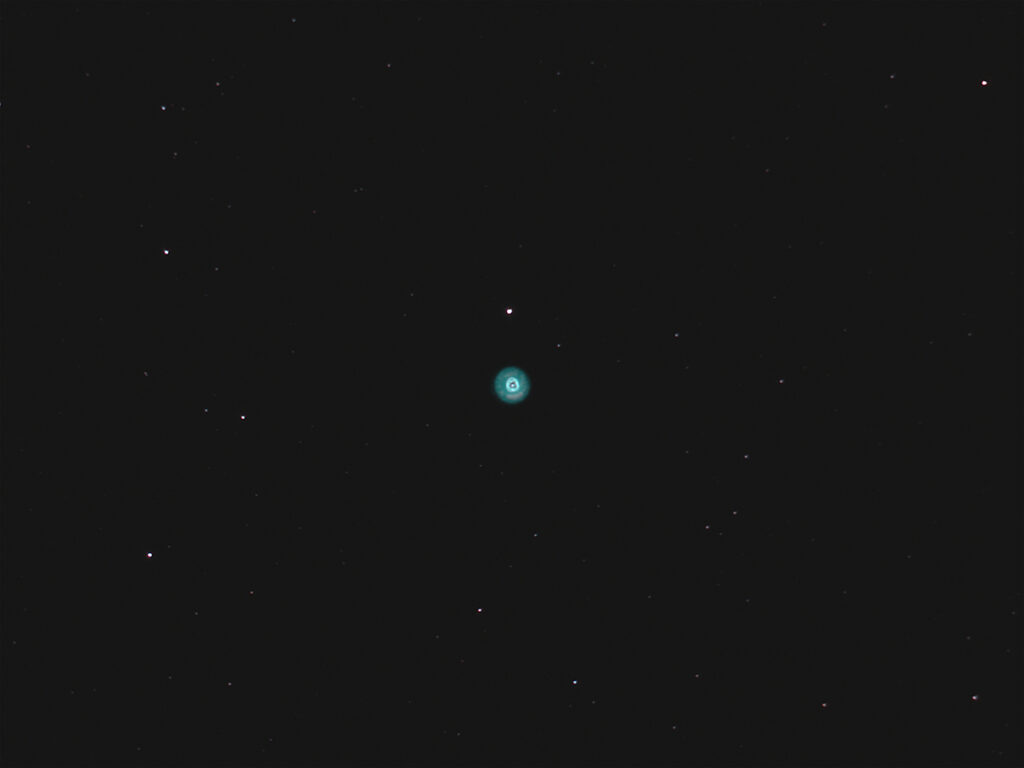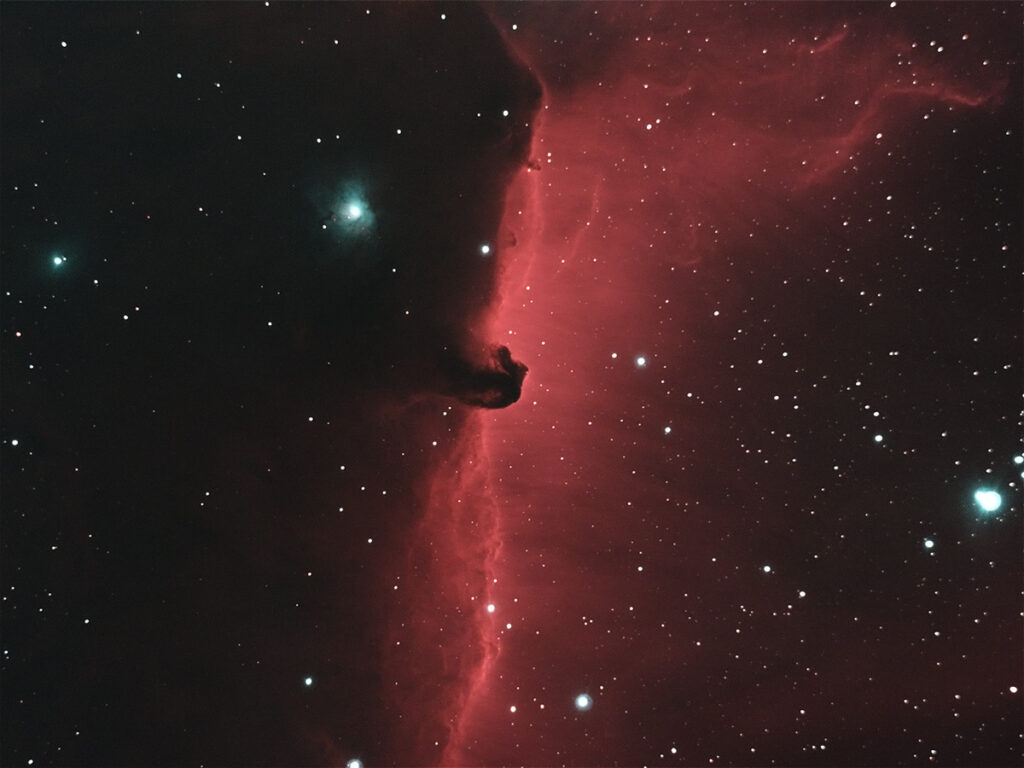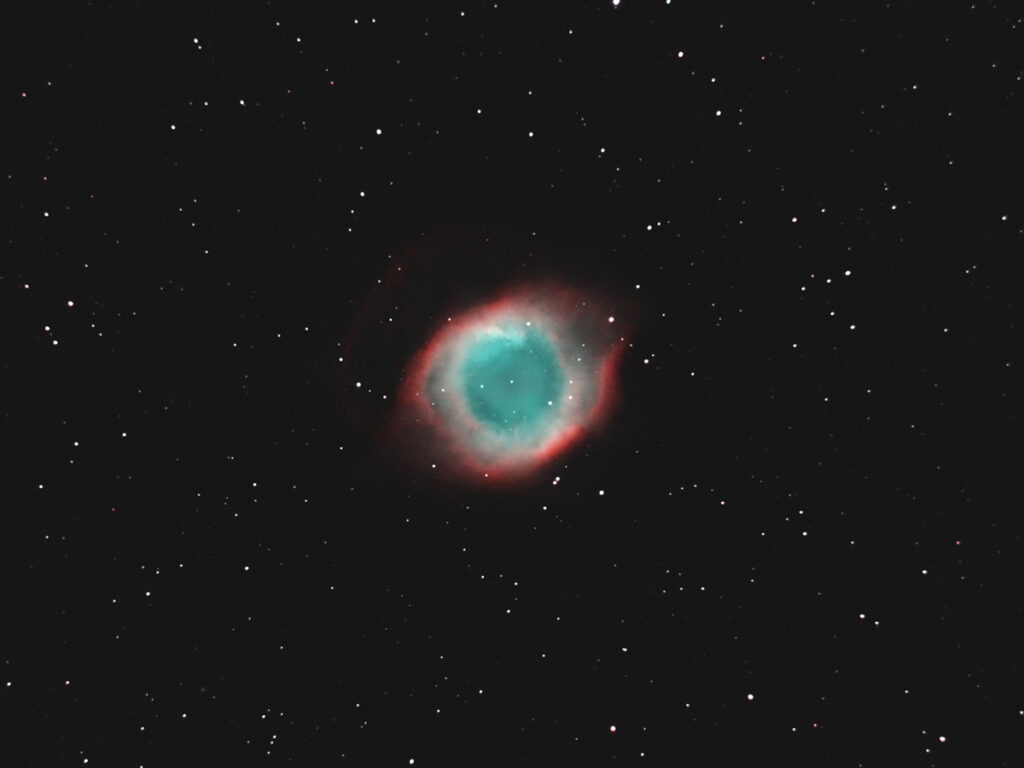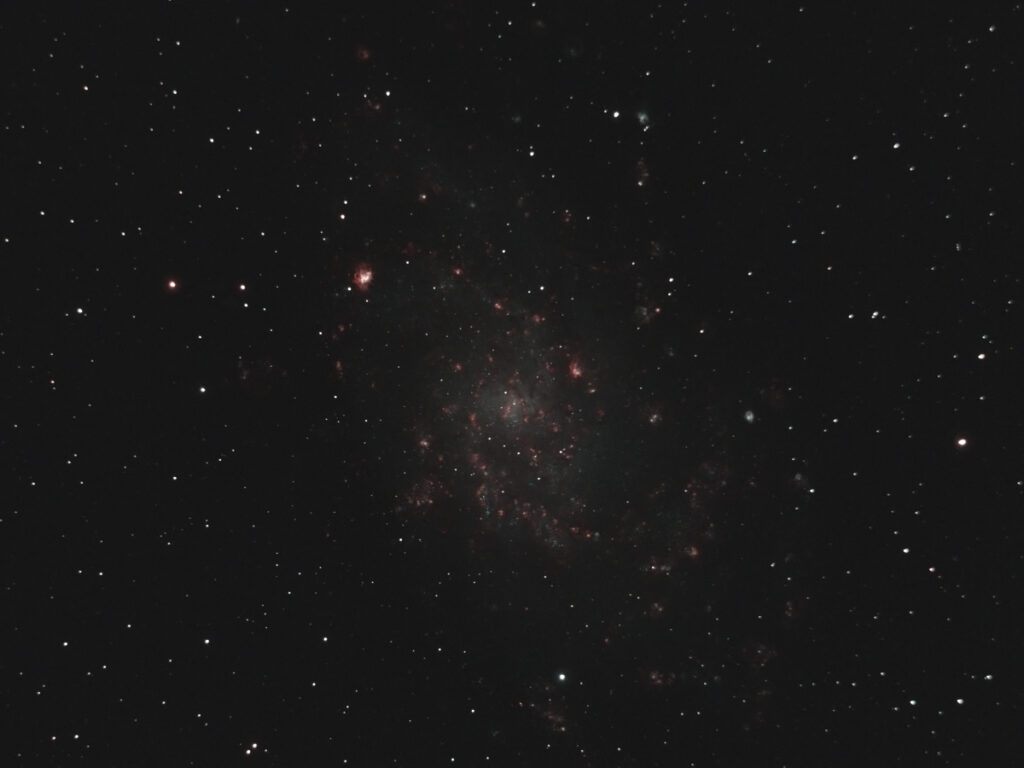
Telescope: Meade SN10 at f/4, Orion Atlas EQ-G
Camera: QHY 268c, Mode 0, Gain 30, Offset 30, -10C
Filter: 2” Radian Triad Ultra Hb, OIII, Ha, SII filter
Guide scope: Williams Optics 50mm, ASI290MM mini, PHD
Exposure: 14x300sec, saved as RAW16/FITS
Darks: 32×300 sec
Flats: 64×2 sec, tee shirt flats taken at dusk
Average Light Pollution: Red zone, fair transparency
Lensed Sky Quality Meter: 18.6 mag/arc-sec^2
Stacking: Mean with a 1-sigma clip.
White Balance: Nebulosity Automatic
Software: SharpCap Pro, Nebulosity, Deep Sky Stacker, Photoshop
NGC 2392, Eskimo Nebula, is a wonderful little planetary nebula Gemini. Visually this nebula looks much like its nickname, even in a small telescope. Planetary nebula are formed when a star sheds its outer shell as it nears the end of its life. The core collapses into a fiercely bright white dwarf whose intense radiation sets the expanding shell of gas aglow, often with a beautiful blue/green color. The structure of NGC 2392 shows that it experienced several shedding events.
The Eskimo Nebula currently rises in the northeast around 9:30 and is high overhead before dawn.









Recent Comments